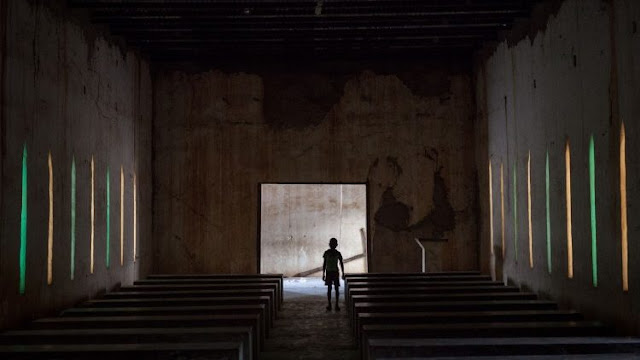Decommissioning Churches while
continuing to serve communities
 |
| An unused church left abandon.- AFP |
A 2-day international conference on Decommissioning places
of worship and integrated management of ecclesiastical cultural heritage is
organized by the Pontifical Council for Culture in collaboration with the
Gregorian University, which is hosting the event from 29 to 30 November.
By Linda Bordoni
Over the last several decades hundreds of Catholic parishes
have closed due to a combination of reasons: a shortage of priests to serve
them, too few parishioners to sustain them, insufficient finances to support them.
But the fact that a church is no longer a church and whether
it has simply been abandoned or sold for another use is an issue that is close
to the heart of the Church and its people.
That’s why the Pontifical Council for Culture is
spearheading the international conference dedicated to “Decommissioning
places of worship and integrated management of ecclesiastical cultural
heritage.”
Day one is dedicated to the serious and urgent matter of the
decommissioning of churches and their new use. On the second day, attention
will focus on management and promotion of the ecclesiastical cultural heritage
as a diocesan pastoral activity.
Bishop Paul Tighe, Secretary of the Pontifical
Council for Culture, spoke to Linda Bordoni about it
Bishop Tighe explained that the conference looks at a
situation that is increasingly urgent especially in Europe and in North America
“where there are many church buildings that are no longer meeting the direct
needs of communities”.
He specifies however, that in every part of the world the
situation is different.
“In some parts of the world, churches were built in inner
cities which are no longer populated” he said while in others the number of
people who are going to church has decreased exponentially.
It is a sensitive issue, that requires “a coming together of
people to talk about it and discuss the general principles and what decisions
can be applied locally” he said.
So, Tighe, continued, this event “is bringing people from
different countries who have engaged in this issue, offering them a chance to
share their ideas and best practices, trying to articulate some general
principles that could apply across the situations and trying to re-imagine
future uses of churches”.
Re-imagining future uses of churches
It is necessary, Bishop Tighe said, to try to think for
example, of redefining a church that is too large for contemporary use so that
part of it can be used for religious functions and other parts of it for
different community purposes.
One of the things, he added, that is guiding this
initiative, is remembering that churches that were built for religious purposes
were also built to facilitate the community.
“So if you are thinking of future uses of churches, not to
just think of commercial uses, but to look at the kind of uses that are
compatible with that desire of being of service to communities. So cultural
uses like museums, art galleries, theatres… uses that still allow the
communities to benefit from them” he said.
Other uses that are being explored Tighe said, are spaces
for dialogue and debate and ‘building community’ even among people who are not
necessarily believers.
Safeguarding the ideals that led to the building of a church
One of the things is to look at, Tighe said, regards what
instruments can be used to make sure that a church that is being sold can
continue to serve the community; perhaps some sort of restrictive covenant:
something that means that for future use, certain uses are excluded.
“Obviously that probably limits the commercial value of the
church you are disposing of, but ensures that sense of a commitment to a
community and to the ideals that led to the building of the church in the first
place” he said.
In a wider perspective, he pointed out that this is not just
a question for the church, but it also engages city life and the possibility of
making good use of buildings that can continue to offer a benefit to citizens.
Tighe mentioned successful decommissioning stories that have
led to former churches being used as libraries, art galleries, concert venues,
as opposed to some incongruous situations, “less acceptable situations in
which you may find yourself in a public house having a drink and there are
elements of Christian symbolism that are still there”.
Ecumenical approach
Finally, he spoke of the need for an ecumenical approach to
the issue as this is not a problem that is unique to Catholicism.
“Other Christian churches, he said, are also looking at this
issue, and after this I imagine there will be a need for an ecumenical approach:
that we think together about how we come up with practices that best serve our
communities”.
Không có nhận xét nào:
Đăng nhận xét